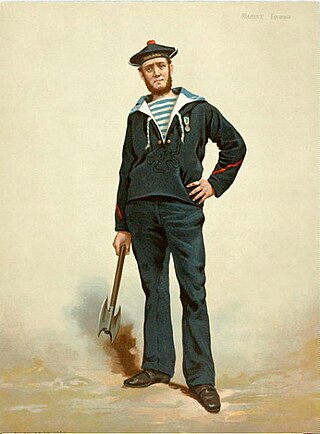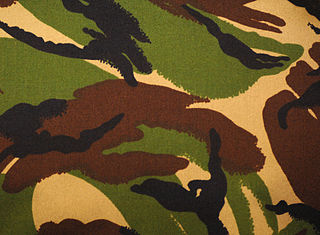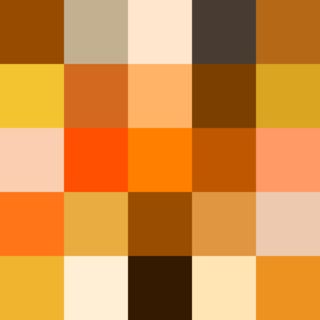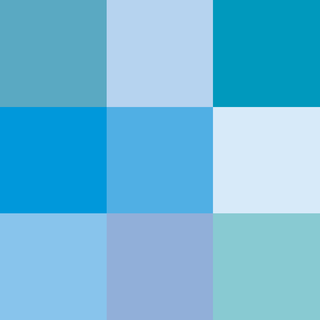
In military organizations, a colour guard is a detachment of soldiers assigned to the protection of regimental colours and the national flag. This duty is highly prestigious, and the military colour is generally carried by a young officer (ensign), while experienced non-commissioned officers are assigned to the protection of the national flag. These non-commissioned officers, accompanied in several countries by warrant officers, can be ceremonially armed with either sabres or rifles to protect the colour. Colour guards are generally dismounted, but there are also mounted colour guard formations as well.

The Union Jack or Union Flag is the de facto national flag of the United Kingdom. The Union Jack was also used as the official flag of several British colonies and dominions before they adopted their own national flags. The flag continues to have official status in Canada, by parliamentary resolution, where it is known as the Royal Union Flag. However, it is commonly referred to in Canada as the Union Jack.

The flag of Scotland is the national flag of Scotland, which consists of a white saltire defacing a blue field. The Saltire, rather than the Royal Standard of Scotland, is the correct flag for all private individuals and corporate bodies to fly. It is also, where possible, flown from Scottish Government buildings every day from 8:00 am until sunset, with certain exceptions.

In British maritime law and custom, an ensign is the identifying flag flown to designate a British ship, either military or civilian. Such flags display the United Kingdom Union Flag in the canton, with either a red, white or blue field, dependent on whether the vessel is civilian, naval, or in a special category. These are known as the red, white, and blue ensigns respectively.

The flag of Namibia consists of a red bend edged in two white bands with a blue upper triangle charged with an 12-ray yellow sun and green lower triangle.

The national flag of Zambia was adopted upon independence on 24 October 1964, by the first Republican President Dr. Kenneth David Kaunda. Before that, Zambia was the British protectorate of Northern Rhodesia and used a defaced Blue Ensign as its flag.

Navy blue is a dark shade of the color blue.

In military organizations, the practice of carrying colours, standards, flags, or guidons, both to act as a rallying point for troops and to mark the location of the commander, is thought to have originated in Ancient Egypt some 5,000 years ago. The Roman Empire also made battle standards reading SPQR a part of their vast armies. It was formalized in the armies of Europe in the High Middle Ages, with standards being emblazoned with the commander's coat of arms.
The color cerulean or caerulean, is a variety of the hue of blue that may range from a light azure blue to a more intense sky blue, and may be mixed as well with the hue of green. The first recorded use of cerulean as a color name in English was in 1590. The word is derived from the Latin word caeruleus, "dark blue, blue, or blue-green", which in turn probably derives from caerulum, diminutive of caelum, "heaven, sky".
Royal blue is a deep and vivid shade of blue. It is said to have been created by a consortium of mills in Rode, Somerset, which won a competition to make a robe for Queen Charlotte, consort of King George III. In winning the prize, a business in the village invented the dye and received a certificate to sell it under that name.

Disruptive Pattern Material (DPM) is the commonly used name of a camouflage pattern used by the British Armed Forces as well as many other armed forces worldwide, particularly in former British colonies.

The Royal Air Force Ensign is the official flag which is used to represent the Royal Air Force. The ensign has a field of air force blue with the United Kingdom's flag in the canton and the Royal Air Force's roundel in the middle of the fly.

In optics, orange has a wavelength between approximately 585 and 620 nm and a hue of 30° in HSV color space. In the RGB color space it is a secondary color numerically halfway between gamma-compressed red and yellow, as can be seen in the RGB color wheel. The complementary color of orange is azure. Orange pigments are largely in the ochre or cadmium families, and absorb mostly blue light.

The uniforms of the United States Air Force are the standardized military uniforms worn by members of the United States Air Force to distinguish themselves from the other services.

Cambridge Blue is the colour commonly used by sports teams from the University of Cambridge. There is contextual and historical variation. The colour used since the mid-20th century by Cambridge University Boat Club is greener than that used by Cambridge University R.U.F.C.. This rowing colour was created when Alf Twinn, the boatman from 1934 to 1984, added more yellow to this shade, reportedly to distinguish it from the rugby club's colour.

Varieties of the color green may differ in hue, chroma or lightness, or in two or three of these qualities. Variations in value are also called tints and shades, a tint being a green or other hue mixed with white, a shade being mixed with black. A large selection of these various colors is shown below.

Varieties of the color blue may differ in hue, chroma, or lightness, or in two or three of these qualities. Variations in value are also called tints and shades, a tint being a blue or other hue mixed with white, a shade being mixed with black. A large selection of these colors is shown below.

Sky blue refers to a collection of shades comparable to that of a clear daytime sky. Typically it is a shade of cyan or light teal, though some iterations are closer to light blue. The term is attested from 1681. A 1585 translation of Nicolas de Nicolay's 1576 Les navigations, peregrinations et voyages faicts en la Turquie includes "the tulbant [turban] of the merchant must be skie coloured".

Oxford Blue is the official colour of the University of Oxford. The official Oxford branding guidelines set its definition as Pantone 282, equivalent to the hex code #002147.

An officer is a person who holds a position of authority as a member of an armed force or uniformed service.



















